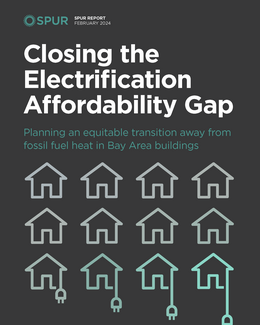In 2023, the Bay Area passed air quality rules that will require newly installed furnaces and hot water heaters to emit zero nitrogen oxide, a health-harming pollutant released by burning fossil fuels. This change is ushering in a transition to electric-powered heat pumps, which heat indoor air and water without emitting dangerous air pollutants. Heat pumps also use far less energy and would greatly reduce carbon emissions.
A major challenge in adopting heat pumps, however, is that they cost more to install than their gas counterparts, in part because they’re less common in California than in many regions across the United States. The lack of familiarity contributes to a cycle of low visibility and low sales for the technology, leading to higher markups, higher labor costs, and arduous permitting processes.
The good news is, these barriers can be overcome with a combination of historic government incentives and complementary policy changes. This report outlines strategies for bringing down the cost of upgrading homes with pollution-free equipment, and urges Bay Area policymakers to cover the incremental cost difference between heat pumps and their gas counterparts for low-income homeowners and low-income rental housing until heat pumps become affordable in their own right. The report’s detailed action plan shows how the Bay Area can make a transition to clean heat in homes — and do so while ensuring the transition is affordable for low-income households.
Read Appendix B. Market-Transforming Regulations
Read Appendix C. Analysis of Net Costs and Savings
